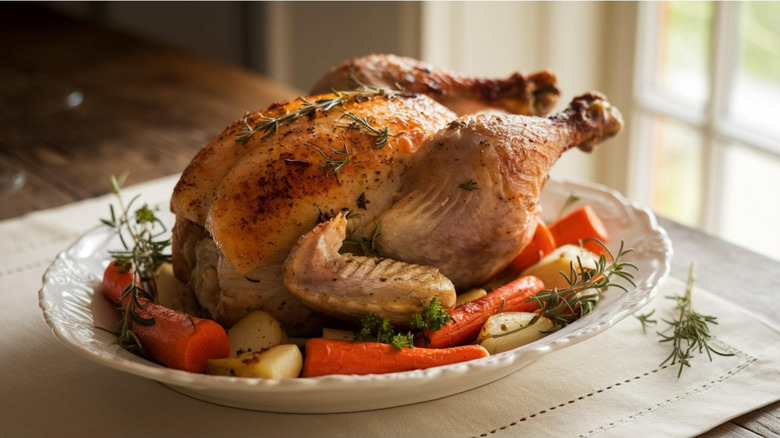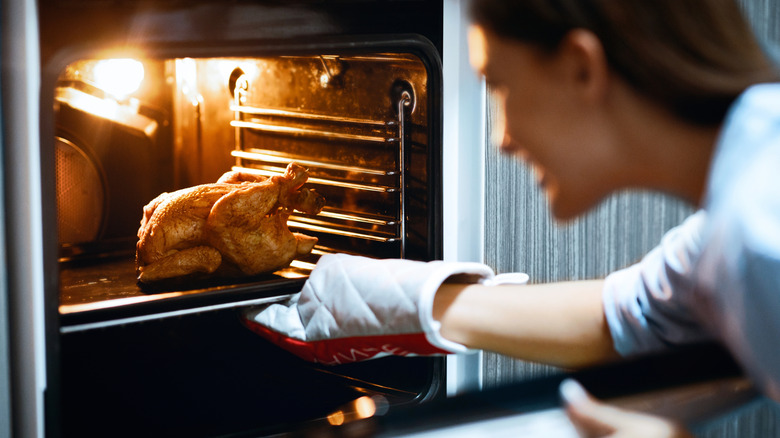How Long To Roast A Whole Chicken For Best Results
It goes without saying that timing is vital when roasting chicken. Not too hot, not too cold; it can quickly feel like a carnivorous version of "Goldilocks and The Three Bears." Tasting Table caught up with Chef Bradley Borchardt, the Strategic Account Chef for Cargill Protein, for some exclusive insight into exactly how to schedule your roasting. "For a nice four-pound bird, I'd suggest approximately 40-60 minutes at 400 degrees Fahrenheit," he says.
Knowing how long to keep the meat in the oven sounds basic, but a savvy approach is one of the best ways to prevent dry, overcooked chicken. You'll need to check the weight of the chicken, too, as Borchardt subtly indicates. Larger birds require longer cooking times — size and thickness impact how quickly heat travels. The average purchase from your local grocery store should be around three to four pounds, but it's worth glancing at the label for an exact figure.
With a few slight variations, learning how to roast the perfect roast chicken is easy enough with the help of a temperature dial and a timer. Don't overlook the power of a quick test, either. When properly cooked, cutting the breast will release a transparent liquid, a food thermometer will show the internal temperature as 165 degrees Fahrenheit, and the meat will appear white, not pink. But start off on the right foot by setting the timer accurately as soon as it goes in the oven.
How to evenly roast whole chicken
Rather than cooking the chicken whole, many people hack their meat into pieces to promote faster roasting times and a more even finish. But what if you want the best of both worlds? An evenly cooked chicken served in one glorious cut? In that case, you need to learn how to spatchcock. This process involves cutting open the breast and removing the backbone — flattening the meat for balanced heat exposure. Think of it as a flatpack whole chicken rather than a raised dish that struggles to fit in between your oven shelves. It even boosts the browning potential, creating a consistent blanket of crispy skin.
Consider the best ways to add more flavor to roast chicken, too. It's not just about evenly cooking the meat but ensuring that added ingredients are spread consistently through the chicken. Choose methods that promote a balanced taste, be that stuffing, marinating, or brining. And brush up on the best way to season roasted chicken for maximum flavor using dry rubs. Interestingly, after it's left the oven, there's one final ditch adjustment you can make for an even result: Letting the meat rest for around 20 minutes. This smart strategy allows moisture to naturally rebalance throughout the chicken, making every bite as juicy as the next. A perfect roast chicken requires some careful fine-tuning, but there's no doubt you'll appreciate the fruits of your labor.

